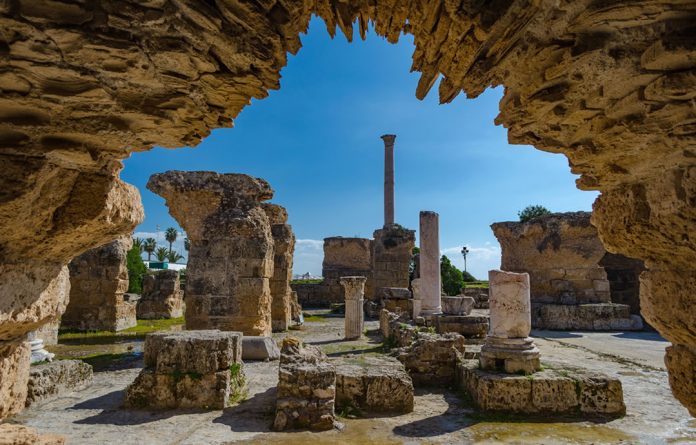Carthage Tunisia has an enviable location. Carthage Tunisia is situated on a peninsula, which is in the shape of an arrow. The city of Carthage served as an important city during Roman times. It became a focal point of early Christianity. Ruins of Carthage can be viewed from Tunis, which is situated in present-day Tunisia.
Carthage Tunisia is not a sacred destination. It has a paucity of surviving temples. Ancient Carthage has played the role of a pagan city, a primary center of Christianity, and the abode of Tertullian and St Cyprian.
Carthage Tunisia previously served as a trading town for Phoenicians. The Romans conquered and destroyed Carthage during the Punic Wars. In BC 44, Julius Caesar created a Roman city in Carthage. It became a central port in the Mediterranean region. Nearly 300,000 individuals inhabited the city during the 3rd century. During this time, Carthage was second only to Rome.
Carthage became a sort of a magnet for trade, foreign visitors, and refugees. Carthage was deeply attached to the culture and civic life of Rome. Many gods were worshipped in Carthage. Tanit and Ba’al Hammon are the most important ones. The priests of Carthage did not sport a beard, unlike the inhabitants. The city saw various rituals and rites, such as rhythmic dancing. These rituals have been derived from Phoenician customs. Goddess Astarte was extremely popular during early time. Several gods were worshipped from neighboring Greece and Egypt.
A Christian community flourished in Carthage Tunisia in AD 200. Tertullian wrote largely for a pagan audience in AD 197. He claimed that Christians have occupied all places amongst you. Carthage held a council of nearly 70 bishops. The Council at Carthage confirmed the Biblical canon for the Church in the west.
Donatist Schism symbolized a major rift in the Christianity of Northern Africa. It was born in AD 312. It officially ended in the Gargilian Baths in AD 411. It drew the attention of St Augustine of Hippo and other prominent theologians.
Vandals occupied the city during the 5th century. However, major portions of the city were still under barbarian rule. Numerous public structures fell into utter ruin. Several church buildings, private homes, and baths were renovated and adorned with beautiful mosaics and sculpture.
The economy of Carthage collapsed in AD 650 while its harbors were rendered useless. Arabs captured the city in AD 698. Carthage Tunisia presently is home to only ruins.
Theatres, villas, baths, and temples, belonging to the Roman era, are Carthage’s primary attractions. The ruins of the amphitheatre and the thermal Antonine Baths are the highlights of the region. They are amongst the largest baths constructed by the Romans.





